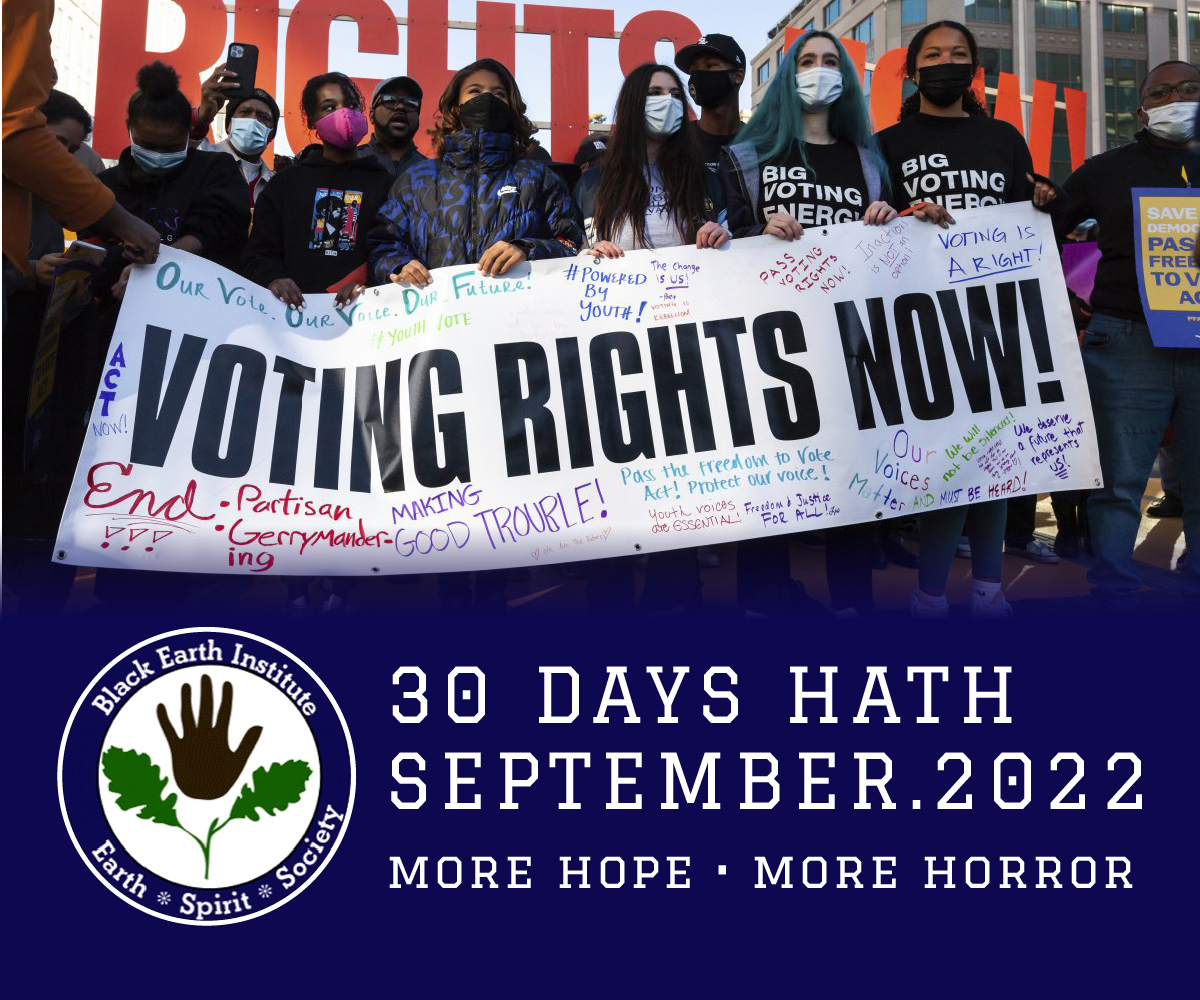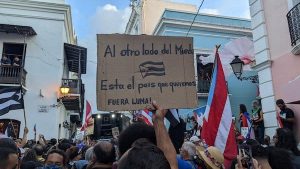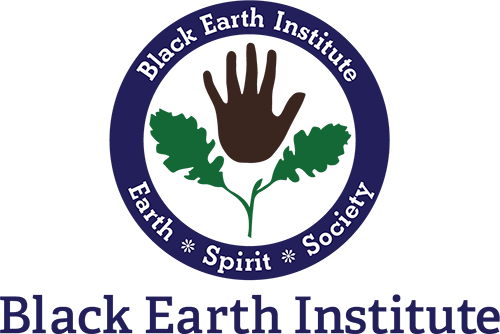
Photo credit: National Education Association
BY MARIANA MCDONALD
El Grito de Lares
Every 23rd of September a contingent of Puerto Rican patriots make the pilgrimage to the mountain town of Lares, where in 1868 revolutionaries led an uprising known as the El Grito de Lares—the cry of Lares—and declared the island nation an independent republic in defiance of Spanish colonizers. Each year El Grito de Lares is commemorated in the small town’s square, around the island, and in events throughout the Puerto Rican diaspora.
Spain’s colonization of Puerto Rico, an emerging nation of indigenous Taíno, Spanish, and African blood, gave rise to numerous rebellions in the nineteenth century. By 1868, that resistance had developed a coherent national character. “Awake, Borinqueño, the signal has been given!” wrote Puerto Rican poet revolutionary Lola Rodriguez de Tió in what became the Puerto Rican national anthem “La Borinqueña.” The uprising at Lares was a bold armed attempt to force the Spanish colonizers to recognize the Puerto Rican nation and cede power. While the military action was defeated within a day, the armed uprising at Lares was a decisive ideological and political victory for the cause of Puerto Rican independence.
The spirit of Lares thrived in the years following 1868 as the crisis of Spanish colonialism festered and served to usher in the era of US imperialism. On July 25, 1898, taking advantage of Spain’s weakened position and in search of a strategic military outpost, raw materials, and cheap labor, the United States seized the island by military force as a spoil of war, and began its 124-years-long illegal occupation of Puerto Rico.

Resistance: the Pulsebeat of Puerto Rican History
The inhabitants of Puerto Rico have resisted colonial domination since the arrival of Columbus. Tainos fought the genocidal plans of the Spanish invaders, and since the 1898 invasion, Puerto Ricans have battled the US occupation.
“The Yankees have been at war…against the Puerto Rican nation and have never acquired the right to anything in Puerto Rico, nor is there any legal government in Puerto Rico, and this is incontestable. One would have to knock to pieces all the international rights of the world, all the political rights, to validate the invasion of the U.S. in Puerto Rico and the present military occupation of our national territory,” declared Pedro Albizu Campos, leader of Puerto Rico’s Nationalist Party. Founded in 1922, the party grew as a dynamic force under the leadership of Albizu Campos, a brilliant and charismatic Afro-Puerto Rican from Ponce.
Soon the United States began to fear the Nationalists’ potential to respond to the island’s growing economic crisis, and to challenge US domination. The United States appointed southerner General Blanton Winship as governor of the island, with the primary task of putting down the Nationalists. Winship’s first step was naming Colonel Francis Riggs, an expert in counterinsurgency, to the post of Police Chief of the island. Riggs boasted of plans to “make war” against the Nationalists.
The nationalist movement grew rapidly as people witnessed Albizu Campos’ resolute insistence on Puerto Rico’s independence, which resonated with a people living in extreme poverty and degradation. Many Puerto Ricans suffered from disease and malnutrition, working long hours in the cane fields, factories, and needlework.
Albizu Campos and the Nationalist party were viewed by the US government as a threat to be countered with fierce repression—repression that reached new heights of violence with the Ponce Massacre on March 21, 1937, when 21 people were killed and over 200 wounded.
As the peaceful demonstration called to protest the imprisonment of Nationalist leaders began that Palm Sunday in Ponce, a single shot was fired followed by a barrage of gunfire, and for fifteen minutes US-supported troops fired on the marchers, the Nationalists, and passers-by leaving church. The horror of those minutes was indelibly written on the pages of Puerto Rican history and the history of the Americas. Even those with no qualms about the colonial status of Puerto Rico and the land-grabbing ways of the United States had to admit it was a massacre.
The Second World War consumed the world’s attention and signaled a new phase for US hegemony; Europe’s state of disarray emboldened US consolidation of power. Puerto Rico was turned into a virtual military base, evicting thousands on the Puerto Rican island of Vieques from their homes as the US Navy took over Vieques for military training. In 1947 the US government began “Operation Bootstrap,” designed to make the island a paradise for capital investment and a “showcase” for Latin America.
The process of transforming Puerto Rico’s economy meant that hundreds of thousands of jíbaros, or peasants, were displaced from the countryside. Puerto Rico’s cities offered no sustenance, and the massive emigration of Puerto Ricans began. The path from the island’s countryside to the USA was traveled by countless Boricuas who would suffer horrific living conditions along with virulent racism and threats to their language and culture.
At the same time, the mass migration consolidated another front in the fight for the independence of Puerto Rico. The Nationalist Party was active in New York in the 40’s, organizing for the release of its imprisoned leaders. Diaspora patriots would play a crucial role in the 50’s, when the United States planned to decimate the Nationalists. Upon learning of US plans to annihilate them, the Nationalists launched an armed insurrection throughout the island. On October 30, 1950 the uprising began in Jayuya, where Nationalist leader Blanca Canales declared the Second Republic of Puerto Rico.
The U.S. responded by bombing Jayuya and storming the streets with US-armed National Guardsmen, who began a wave of mass arrests. In US news, the uprising was depicted as “local riots” and a virtual blackout prevailed. To draw world attention to Puerto Rico, Nationalist party members Oscar Collazo and Griselio Torresola attacked President Truman’s mansion. In the attack Torresola was killed and Collazo was taken prisoner and sentenced to the electric chair. An international campaign mounted by the Nationalists won Collazo a stay of execution. Active in the campaign to save Collazo was a young Puerto Rican woman named Lolita Lebrón. In 1954 she would lead an attack on Congress to call world attention to that body’s responsibility in maintaining Puerto Rico’s colonial status. On March 1, 1954, Lolita Lebrón, Irvin Flores, Rafael Cancel Miranda, and Andrés Figueroa Cordero entered Congress with the cry of “¡Viva Puerto Rico Libre!” punctuated with bullets. They were immediately taken prisoner and called “Puerto Rican fanatics.”
The repression of the 50’s took a heavy toll; nationalists and sympathizers were jailed, beaten, and sometimes murdered. Avowed independentistas suffered persecution that kept them condemned to poverty and forced them into exile. Meanwhile, profits from Puerto Rico skyrocketed. Industries thronged to Puerto Rico, attracted by tax-exempt status, cheap labor, and lack of environmental regulations. Emigration continued unabated, while forced sterilization of women limited Puerto Rico’s population growth. Over one-third of the Puerto Rican population had emigrated to the States, and a third of all Puerto Rican women of childbearing age had been sterilized. Economic disaster persisted; unemployment reached a staggering 40%, and Puerto Rico amassed a huge national debt.
By the new millennium the crisis of the colony could not be contained. The accelerating demise of the Puerto Rican economy was undeniable, and island officials were forced to declare Puerto Rico’s $74 billion debt unpayable. Corrupt colonial administrations, decades of trade limitations codified in the Jones Act, and hedge fund investors had reinforced the colonial stranglehold on the Puerto Rican economy, leading to a profound crisis and the exodus of tens of thousands of Puerto Ricans. For those remaining on the island, officials called for greater “austerity” with cuts in pensions, schools, and services, placing the burden of the crisis on those who had no role in creating it.

PROMESA and the Junta de Control Fiscal
Since the early 2000’s, Puerto Rico has suffered a protracted economic recession and an ever-growing unsustainable national debt. In an effort to placate worried investors and expand the means for economic control over the island, Congress passed in 2016 the Puerto Rico Oversight, Management, and Economic Stability Act, or PROMESA, which installed an unelected Junta de Control Fiscal—Fiscal Control Board, known as the Junta. The Junta has used its power to impose “austerity” measures and negotiate debt restructuring plans that enrich investors while disadvantaging Puerto Ricans. The Junta mandated over 300 school closures, reductions in pensions, and other measures that amount to a frontal attack on the Puerto Rican people and their educational, cultural, labor, and economic institutions.
Hurricane Maria. September 20, 2017
As the impact of the Junta’s actions began to take effect, Puerto Rico was pummeled with a natural disaster that literally tore the island apart: Hurricane Maria, which made landfall September 20, 2017 and threw the island into chaos, silence, and darkness, as the hurricane toppled communications and electricity towers. Maria ripped roofs off houses and overnight created tens of thousands of people without homes, potable water, electricity, or access to health care.
As if Maria’s devastation was not enough, the then US President visited the island and contemptuously tossed paper towels at a people in desperate need of basic supplies and services as they grappled with the loss of an estimated 4,645 people, casualties of the hurricane and its massive destruction. The widespread corruption and incompetence of the colonial government was repeatedly demonstrated in Maria’s aftermath. Months after many died from contaminated water and lack of medical supplies, it was discovered that extensive provisions of bottled water, food, and other necessities had been dumped and hidden in sixteen warehouses around the island, to be used as bargaining chips by corrupt officials.
The impact of Maria is still felt today. Blue tarps dot rooftops throughout the island, reflecting the ongoing failure of the US response, in particular FEMA, to address the Puerto Rican people’s needs. These needs grew dramatically and qualitatively in late 2019 and early 2020, when a series of devastating earthquakes rocked the island, causing extensive damage and trauma, and rendering thousands homeless.
The earthquakes had not abated when the first cases of Covid 19 were detected in the Western hemisphere. For Puerto Rico, the pandemic added one more disaster for the island’s people, whose capacity to control the spread of covid was thwarted by restrictions on their ability to determine what cruise ships would dock on the island’s shores, and what tourists would be allowed to enter though the island’s airport.
In this triple whammy of hurricane, earthquakes, and pandemic, Puerto Ricans have experienced and suffered through a persistent problem that profoundly affects their day-to-day lives: the failure of the electricity company to provide stable and dependable electric power. “Se fue la lu’ ”—The power’s out!—has become a daily exclamation and frustration, giving rise to massive protests demanding the ouster of LUMA, the energy contractor that has failed to provide basic services, while gouging people with repeated rate hikes.
From Lares to LUMA
The bravery, defiance, and determination of El Grito de Lares are part of Puerto Rico’s DNA. Today resistance takes center stage as Puerto Ricans fight to oust Pedro Pierluisi, the pro-statehood governor, along with the US-imposed Junta and LUMA. The flashpoint is the demand that LUMA, the energy contractor, be thrown out of Puerto Rico and their 15-year contract cancelled. Protestors point to LUMA’s gross incompetence, corruption, and greed that have resulted in constant power outages and repeated exorbitant rate increases since LUMA assumed control in June 2021.
Under the banner “FUERA LUMA”—”Out with LUMA”—a broad united front of sectors engaged in current struggles on the island—environmental, independence, women’s, students, workers’, cultural, and other—has taken to the streets to demand change, in militant actions reminiscent of summer 2019’s successful efforts to force the resignation of governor Ricky Rosselló.
How can people in the United States support Puerto Rico?
How can people in the United States, “the belly of the beast,” respond to events in Puerto Rico today?
A first step is to become informed of what is happening in Puerto Rico and the draconian measures being taken against the Puerto Rican people in the name of “oversight” and “management” of an economic crisis created by US policies and practices, not by the Puerto Rican people.
It’s also prudent to follow legislative developments in the United States pertinent to Puerto Rico. Repeated efforts to force Congress to act in favor of Puerto Rico’s self-determination have routinely confronted obstacles. In recent years, a bill proposed by representatives Nydia Velázquez and Alexandria Ocasio-Cortez, the Puerto Rico Self-Determination Act, ostensibly would have created a process of island-wide dialogue and constituent assemblies culminating in a vote. It was recently set aside in favor of a “compromise” bill pushed by pro-statehood forces called the Puerto Rico Status Act, which would amount to one more plebiscite, this time with
three choices: statehood, independence, or “free association” à la Palau, the Marshall Islands, and the Federated States of Micronesia. Without a grass-roots education process (that was removed in the “compromise”), it is unlikely the third option of “free association” will be readily understood or seriously considered. (Understanding the meaning of the third option would be a challenge in the best of circumstances, given that, other than all being islands under the control of the United States, these islands have very little in common with Puerto Rico.)
It is worth noting that longstanding bonds of solidarity between Puerto Ricans and the US people have historically been critical in achieving victories. These victories include winning the release of political prisoners: the Five Nationalists arrested in the 50s and those arrested in the 80s, including Oscar López Rivera, imprisoned 35 years and released after an extended international campaign. US activists have also supported the end of forced sterilization of Puerto Rican women, the removal of the US Navy from Vieques, the cancellation of Puerto Rico’s debt, and the ouster of Rosselló.
This solidarity—which Nicaraguan poet and writer Giaconda Belli called “the tenderness of the people”—has been vital, and is needed now more than ever. US advocates of self-determination, democracy, and justice are wise to offer support for the popular movements in Puerto Rico and their united front demand to oust the governor, the Junta, and LUMA. Such support can be manifested in a number of ways, from material support of basic needs to political support of Puerto Rican movement demands, and pressuring the US government.
The moral and political imperative of US solidarity with Puerto Rico is similar to that of the US people and the war in Vietnam. The US government launched, financed, and carried out that war, using US soldiers. It was therefore crucial that the US people protested and fought for an end to the war, while supporting the Vietnamese people. Today the US people are called upon to demand an end to US colonialism in Puerto Rico, an oppressive system of exploitation and control that has far too long trampled on the Puerto Rican people’s right to self-determination, freedom, and happiness.

